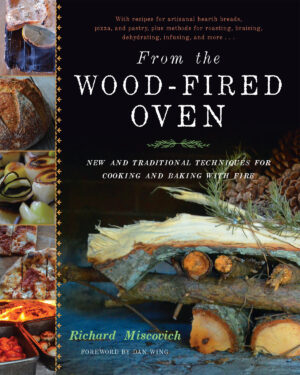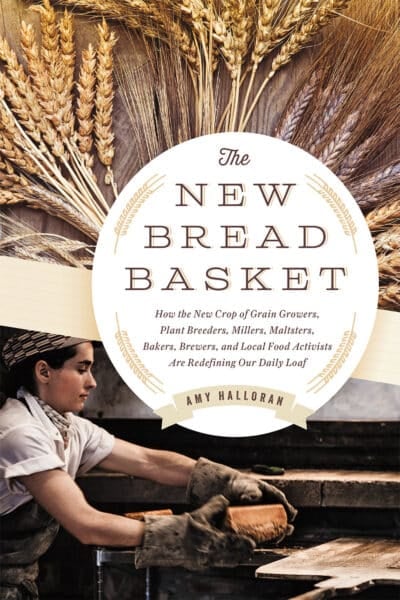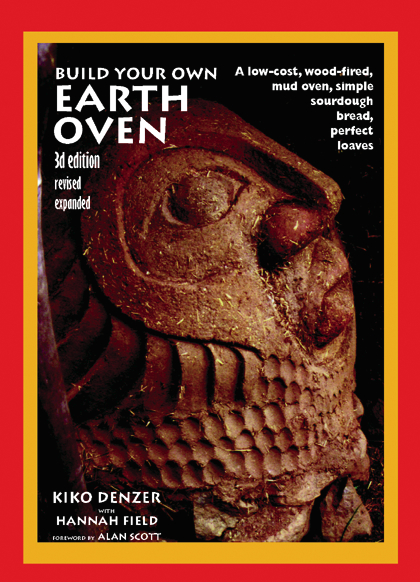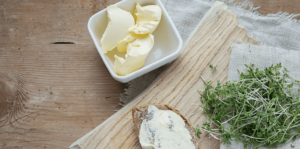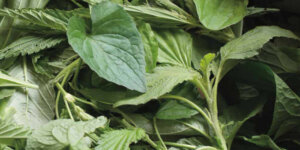How to Build An Outdoor Clay Wood-Fired Pizza Oven
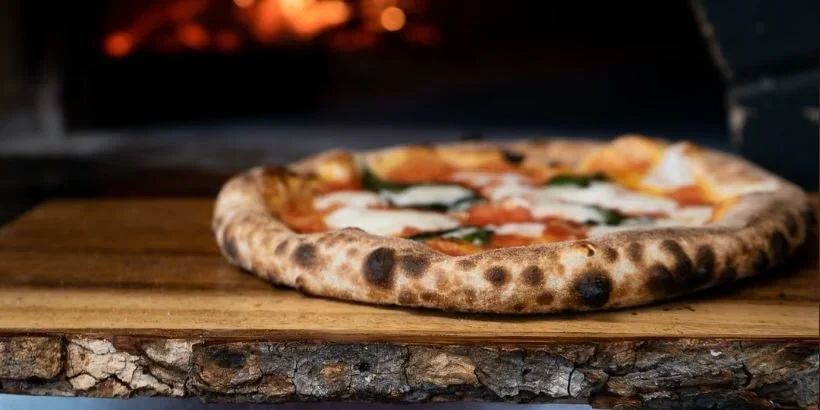
Nothing can be compared to the taste of a fresh, hot slice of pizza that came straight out of a wood-fired oven. By building your own clay wood-fired pizza oven, you’ll have this cheesy delicacy at your fingertips whenever you’re craving it!
VIDEO: Building An Outdoor Clay Wood-Fired Pizza Oven
Take it from Richard Miscovich, the earthen construction expert and author who helped King Arthur Baking Company demolish, restore, and rebuild the beloved giant clay wood-fire pizza oven in Norwich, Vermont.
Check out the video below to see how Richard and King Arthur Baking Company worked together to make their masterpiece out of clay.
Keep reading for more tips on how to build your very own outdoor clay wood-fired pizza oven.
The following is an excerpt from From the Wood-Fired Oven by Richard Miscovich. It has been adapted for the web.
How to Make A Wood-Fired Pizza Oven From Clay
This may be one of the simplest and least expensive ways to build a wood-fired oven, because materials can be locally sourced—often for free.
Earth is the flour of the mason. Add some water to clay and you have a material that can be shaped and baked into an oven.
In one weekend, you and a couple of friends could bring a wood-fired oven into your life, no problem.
Earth Ovens
Earth ovens are usually made by forming damp sand into a dome shape on top of a firebrick hearth.
The outer edge of the sand form will be the inside wall of your oven, so make sure to shape the oven to the right size for your intended purpose and to fit your cooking utensils.
Clay mixed with sand (two to three parts of sand to one part of clay) is then mixed with water (and by your feet) to make a firm, yet pliable mixture. Be careful not to add too much water.
If the mixture is too wet it will slump when a 3″ to 4″ shell of this clay mixture is packed around the sand form.
What Is Cob?
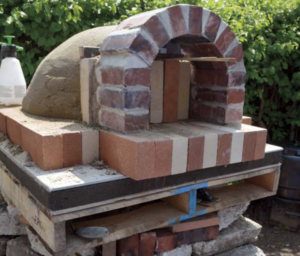 “Cob” is technically this same clay-and-sand mixture with the addition of straw or other fibers to add tensile strength. (Cob is a traditional building material that can be used to build walls and comfortable structures.)
“Cob” is technically this same clay-and-sand mixture with the addition of straw or other fibers to add tensile strength. (Cob is a traditional building material that can be used to build walls and comfortable structures.)
This oven-building approach also includes southwestern adobe-built hornos and simple ovens from cultures around the world.
Once the layers have dried for a day or two, a door is cut out of the clay and/or cob layers and the sand is scooped out, leaving behind a clay shell oven.
Mixing Clay
It is a wonderful experience to mix clay, sand, and water with your feet and then shape the mixture into an oven with your hands. It can be even more hands-on if you dig your own clay or collect sand.
If you don’t have a good source where you can dig your own, drop in on one of your local potters. Often they have unfired clay they can’t use and will be thrilled to give it away and reclaim some space in their studio.
It is okay if the clay is dry; just put it in a container and cover with water. In a week or so, it will be soft enough to mix with sand in order to create the layer of the oven that acts as thermal mass.
If you can’t dig your own or receive potter donations, dry bagged fireclay, available at most well-stocked masonry supply companies, is a good substitute. It is more expensive, but the convenience may be worth it.
Clean sand is easier to dig than clay, or bulk or bagged mason sand can be purchased.
Heat Storage
The heat storage capacity of an earth oven isn’t as great as one made of firebrick, which means it is less able to store heat than one made of dense bricks. There are, however, ways to increase the heat-retaining properties of an earth oven such as adding dense aggregate, like concrete gravel to the cob.
Many earth ovens have the firebrick in the hearth oriented so the hearth is 21⁄4″ thick, but if the bricks are turned 90 degrees, the hearth becomes 4″ thick.
Yes, it will take more bricks, more fuel, and a longer heat-up time, but the greater amount of stored heat will give you more opportunities to bake and cook.
I very much appreciate the low cost of building an earth oven, but for my Providence earth oven I have invested in foam glass for laying under the hearth insulation, which greatly slows heat migration into the foundation.
Earth ovens are often built without a chimney.
Skipping this architectural component simplifies construction but negatively impacts combustion, because chimneys create draft, pulling more oxygen into the firebox. However, a draft door can help improve combustion on an oven without a chimney.
Channeling the smoke into a chimney does prevent any spillage from staining the oven directly above the door.
Some people make a vent hole in the top of the dome when they are constructing a cob oven, but avoid this—it will make it impossible for you to retain steam while baking bread.
Recommended Reads
Recent Articles
Looking for a delicious (and spicy) DIY project to work on this spring? This recipe for foraged, tabasco-style ramp hot sauce is sure to turn up the heat. The following is an excerpt from The Forager Chef’s Book of Flora by Alan Bergo. It has been adapted for the web. Unless otherwise noted, all photographs…
Read MoreNew to foraging? Here are a few beginner tips to get you started on your hunt for wild edibles! And next time you are taking a walk around the neighborhood, keep your eyes peeled for these thirteen plants: dandelion, mallow, purslane, plantain, thistle, amaranth, dock, mustard, grass, chickweed, clover, lambsquarter, and knotweed. The following is…
Read MoreHerb butter is a fantastic trick to have up your culinary sleeve! These two recipes offer simple ways to use edible flowers and herbs that you can pick right in your backyard. If you’ve never made herb butter, you’re in for a treat. These recipes are from The Occidental Arts and Ecology Cookbook, by The…
Read MoreLooking for a simply & healthy snack to make this spring? These tips will help you whip up a delicious Greek-style yogurt with ease. The following excerpt is from Keeping a Family Cow by Joann S. Grohman. It has been adapted for the web. Making Yogurt Milk from a high-milk-solids breed such as the Jersey…
Read MoreWhether you are an expert forager or new to the skill, it’s important to understand how to store your freshly picked bounty. Luckily, author Alan Bergo has the lowdown on how to harvest wild greens and cook them for the best storage so your harvest can stay fresh for days after being picked! The following…
Read More
